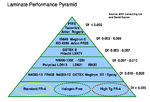nuno_portugal
Newbie level 4
Hi,
I would like to know the dielectric constant and the loss tangent values for FR4 at 5.9GHz.
Do these parameters vary with the material thickness?
Thanks,
I would like to know the dielectric constant and the loss tangent values for FR4 at 5.9GHz.
Do these parameters vary with the material thickness?
Thanks,

